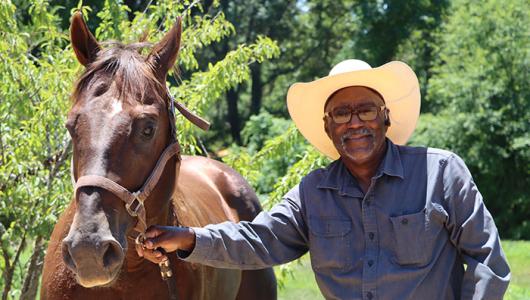While there was no time to build an ark to prepare for the “bomb cyclone” that hit Nebraska and other areas of the Midwest this spring, farmer Noah Seim said one of his fields successfully braved the storm because he had established a healthy stand of rye as a cover crop.
Noah has been planting cover crops on his cropland for over 10 years. He recently enrolled in the Nebraska Soil Health Initiative, a partnership effort between the Natural Resources Conservation Service and the University of Nebraska at Lincoln, to gain a better understanding of the science behind planting cover crops and the impact on soil health.
Cover Crops
It turns out that the cover crop he planted served as sort of an “ark” for Noah’s bean field following the severe weather Nebraska had this past March.
“The storm went through here and it just rained and rained and rained,” Noah said. “Our ground was frozen, it could not take barely anything in at all. The creek came out of its banks and out of 75 farmable acres, 70 of them were underwater. The rye survived, and the field came out of it. I cannot imagine what that field would have looked like if the rye had not been there.”
Aaron Hird, soil health specialist with NRCS, said cover crops can provide many benefits to cropland. While not typically planted to prevent damage from flooding, he’s noted several Nebraska crop fields that would have fared far worse after March’s severe weather if not for having a cover crop established.
“Cover crops protect the soil with living plant vegetation above and below ground,” Aaron explained. “That protects the soil from heat, wind, rain - and in the case of Noah’s field - flooding.”
“Crop residue, such as corn stalks, left after harvest can provide the soil some protection from erosion. But during the recent flooding, farmers noticed that crop residue would wash or float away. Since cover crops are growing in the soil, they don’t wash away, and their roots hold the soil,” Aaron said.
Nebraska Flooding
That was the scenario that played out on Noah’s cropland. Noah added, “The rye held everything in place. The soil stayed put and only the soybean residue had been washed around.”
Aaron works with farmers across Nebraska and knows that not all flooded acres were able to be planted this year. Instead of leaving those acres exposed and vulnerable to further damaged from wind, heat and water, Aaron encouraged producers to plant a cover crop.
Aaron added, “For Nebraska’s cropland that suffered significant damage, planting a cover crop can be a great way to help protect fields and help restore productivity.”
“That flooded field will go into commercial corn this year,” concluded Noah. “We will interseed a mix of six pounds of cereal rye and four pounds of red clover and will plant it at the V-4 stage. We are looking forward to seeing how things go this year and are so thankful for that rye crop.”


